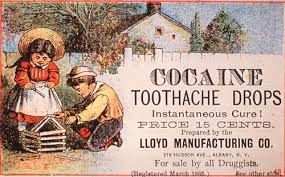 In a recent discussion about whether children should be given immunizations for certain childhood diseases, I started to think about early modern medicine and its practices in the Western world. While looking into it, I came across some interesting observations, opinions and facts particular to women from the book, Medicine: A History of Healing, Ancient Traditions To Modern Practices.
In a recent discussion about whether children should be given immunizations for certain childhood diseases, I started to think about early modern medicine and its practices in the Western world. While looking into it, I came across some interesting observations, opinions and facts particular to women from the book, Medicine: A History of Healing, Ancient Traditions To Modern Practices.
Modern Western medicine was founded on the basic sciences developed in the ‘first half of the nineteenth century.’ Some of these sciences included Microscopic anatomy, physiology, pathology, and pharmacy. The development in the 19th century of these sciences progressed quickly and ‘gradually came to be applied to medicine.’
During the eighteenth century and earlier, scientists had been practicing physicians and amateurs most often working in their homes, but now the medical scientist began to work in laboratories. As religion declined and medicine grew more powerful and ‘authoritative,’ medical ideas began to embody ‘current social ideas about women.’ Doctors began to support the societal status quo through justifying the ‘control of women through medical authority.’
Listed are some of the medical attitudes and practices of the time that reflected the beliefs and prejudices of the day.
· During the 19th century, middle-class women were considered to be chaste, lazy  and sickly.
and sickly.
· Working-class women were viewed as polluters and a serious risk from infection.
· A common ‘Catch-22’ was the ‘theory’ that women were ill by just being women and would become ill if they tried to do anything beyond their conventional female roles.
· Their illnesses most often were related to their reproductive system, which limited their ability to do anything and required constant care from a medical practitioner.
· Girls were treated as invalids during puberty, which was viewed as a crisis.
· Menstruation was considered a disease.
 The picture on the left is an illustration from an 1822 textbook produced by J-P Maygrier. It portrays a suggested solution for examining a woman’s genitals.
The picture on the left is an illustration from an 1822 textbook produced by J-P Maygrier. It portrays a suggested solution for examining a woman’s genitals.
· Pregnancy was seen as an illness and even a form of epilepsy. The pregnant woman was treated as if she was sick and was advised to stay in bed. Doctor’s care moved from the traditional midwife to the medical practitioners.
· Menopause was viewed as a ‘state that caused disease.’ ‘The nervous force, no longer finding useful function, goes astray in every direction.’ The belief of the time was that natural female functions of ovulation, gestation, labor, lactation and menopause dominated the entire body or organism of a woman.
Medical science became so popular at this time that it began to extend its power into many aspects of daily life not considered a part of its domain. Anything labeled as an illness’ or ‘disease’ was required to have ‘scientific’ medical treatment.
These included: Alcoholism, homosexuality, drug use, criminal acts, and variations in sleep patterns.
Today, there are still conditions that are viewed as requiring medical interventions and are labeled as diseases and illnesses. They might only be part of the human physical, social and normal process, but our current society’s attitudes reflect a bias toward medical treatment. One that the book suggests is hyperactivity. What do you think?

